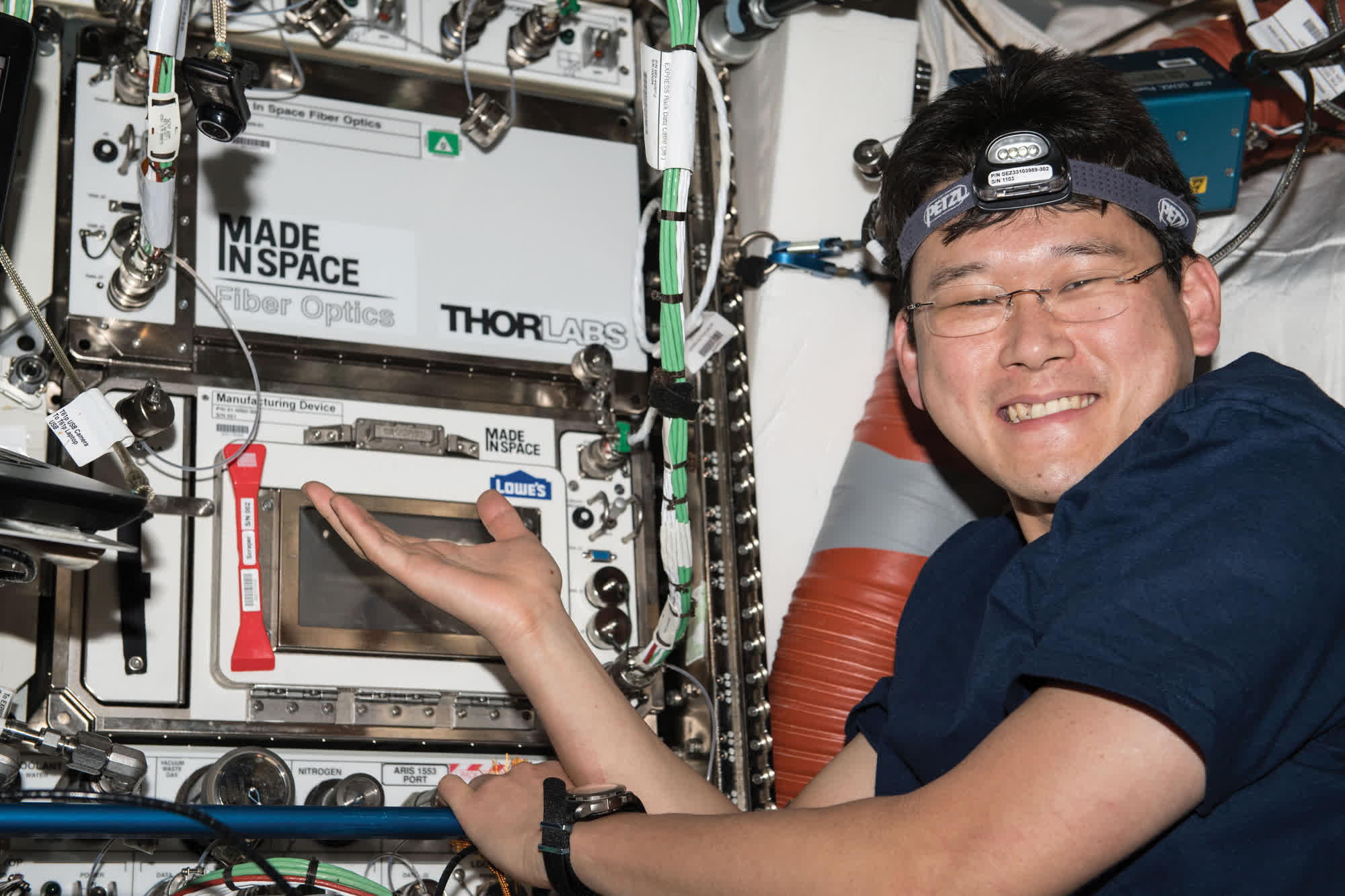Space manufacturing: Optical fibers are used in a variety of industries where high-bandwidth data transmission over long distances is paramount. It's an impressive bit of engineering but as recent testing on the International Space Station has proven, fiber manufactured in space is far superior to what we can make here on Earth.
Astronauts used ZBLAN preform, which is a glass alloy compromised of barium, zirconium, lanthanum, aluminum fluorides, and sodium, in their tests. These glass rods are used in runs (called draws) in which they are stretched into incredibly thin fibers.
When ZBLAN is drawn into fibers on Earth, gravity causes crystals to form that scatter light and make the fiber brittle. Crystals form slower in microgravity, however, and can even be avoided entirely if the draws are cooled down fast enough.
ZBLAN-based optical fibers allow light to travel further than traditional silica-based fibers, and have more than 10 times the data capacity.
Preliminary results from NASA's testing look promising. Astronauts were able to draw more than seven miles (11.9 km) of fiber over a month-long production run on the ISS. NASA said eight of its draws produced more than 2,200 feet (700 meters) of fiber. In another test, they were able to draw more than 3,700 feet (1,141 meters) in a single day.
The space-drawn, ZBLAN-based fibers are expected to return to Earth soon for quality analysis. Rob Loughan, CEO of Flawless Photonics (the company that made the space manufacturing equipment), told The Register that samples will eventually be sold to companies interested in experimenting with space-drawn, ZBLAN-based fiber.
According to Loughan, they have already secured several orders for space-made fiber at $1,00 per meter. One client even purchased $1,000 worth, or about 100 meters.
Flawless is also working to improve the ZBLAN purification process, and eventually aims to make its own preforms in space to bring home and see how they respond to being pulled under Earth's gravity. It'd also be interesting to see how ZBLAN made in space compares to Earth-made ZBLAN when drawn on the ISS.
